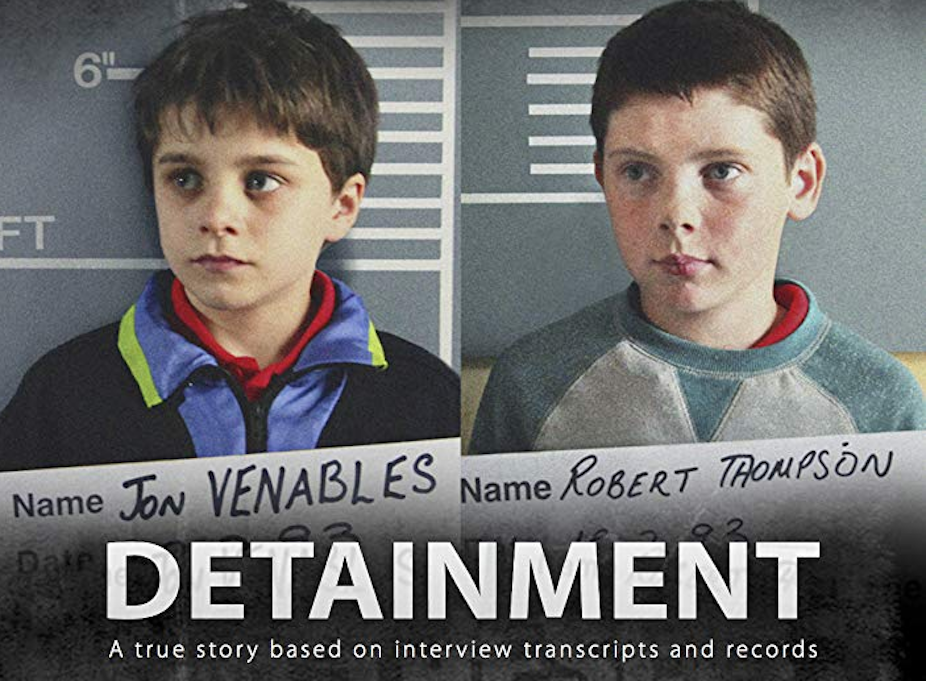True crime is a very popular genre of film and television. You’ve only got to look at the success of the Serial podcast as well as the Netflix documentary series Making a Murderer and FX’s true crime anthology drama series American Crime Story to see that murder makes good box office – the more gruesome or complex the better.
So, in a sense, it’s not surprising that producers and screenwriters are constantly looking out for notorious cases to turn into films. But, equally understandable – given the nature of the killing – was the outcry over the announcement that a film about the 1993 murder of Liverpool toddler James Bulger by two 10-year-old boys had received an Oscar nomination.
The Bulger killing was one of the most infamous British crimes of a generation. The name itself is instantly and hauntingly evocative for whole generation of Britons.
Ethics and censorship have long been hot-button issues where the media representation of controversial and sensitive content are concerned, especially where that representation takes the form of drama with its assumed remit to entertain and divert.
Detainment, written and directed by Irish filmmaker Vincent Lambe and nominated for an Oscar in the Best Live Action Short Film category, is a drama adapted from the transcripts of interviews that took place between the police and the two young suspects in the case following their arrest. The film was made against the wishes of the murdered child’s family.
In the weeks prior to the nomination, James Bulger’s mother Denise Fergus was vocal in her opposition to the film in the UK media, revealing that her consent had not been sought.
Yorkshire Ripper
The criticisms levelled against Detainment on the grounds of its very existence echo the strikingly similar reception met by two reported attempts in the early 1980s (one genuine and one spurious) to make dramatic feature films about serial killer Peter Sutcliffe, who murdered 13 women in the north of England between 1975 and 1980.
When, in late December 1980, Hollywood studio MGM announced the imminent production of a film that had tentatively been titled The Yorkshire Ripper, the killer was still active and at large. News of the outrage with which the announcement had been met in the UK – not least by the grieving family of the recently murdered Jacqueline Hill who had become the killer’s 13th victim just five weeks earlier – was picked up by the Associated Press and reported across the world. Just three days later – and seemingly in response to this widely mediated pushback – MGM issued a statement to the effect that the film had been abandoned.
Later, over the course of the summer of 1981 – a few months after Bradford man Peter Sutcliffe had been arrested and just weeks after he was found guilty of 13 murders – new reports emerged of a second attempt to produce a Ripper movie. This time it was apparently United Artists behind the film, which had the working title Hail Mary. This was later revealed to be a hoax – but not before a huge outcry, led by Jacqueline Hill’s mother Doreen Hill and backed by the voices of many women and women’s groups.
Media coverage of the crimes both at the time and since has played an important part in elevating the status of first Sutcliffe and later Jon Venables and Robert Thompson, the murderers of James Bulger – to the status of contemporary “folk devils”, as conceptualised by sociologist Stanley Cohen in his 1972 book Folk Devils and Moral Panics. Cohen defined folk devils as individuals associated with acts of social deviance who take on a symbolic cultural role that transcends the reality of their status. This is enabled by the way the media tends to reduce their actions to a narrative that lends itself to exaggeration and sensationalism.
It’s also a phenomenon that is helped along by the emergence of variously motivated forms of moral crusade. And, accordingly, politically charged moral panics correspondingly ensued from both cases. People pointed to what they saw as a link between the social ills that were thought to have created a context that enabled the crimes of the perpetrators. They also decried Hollywood films of the era that explicitly depicted similar acts of violence.
Singled out for particular attention and opprobrium in this regard was Brian De Palma’s serial killer thriller Dressed to Kill, which was playing in cinemas across the UK at the time of Hill’s murder. There were protests and many people boycotted the film as a result.
Who is to blame?
In the aftermath of James Bulger’s murder, social conservatives in the mainstream media were quick to attempt to account for the horrific event by pointing the finger of blame at the supposed shortcomings of working-class family life. There was also much discussion of the supposedly “ill effects” of media violence – especially in the form of home video.
Reports speculated a videotape of the horror film Child’s Play 3 – with its psychopathic doll Chucky – had been viewed in the home of one the child perpetrators shortly prior to James Bulger’s death, although this was subsequently dismissed after a Home Office enquiry.
But it’s important to remember that while true crime makes for popular entertainment – and some films, particularly documentaries, are both interesting and informative – the media needs to be careful about how and when it addresses these most sensitive of stories. More than just basic consideration for the bereaved families, we just know all too well the dangers they can unleash.

